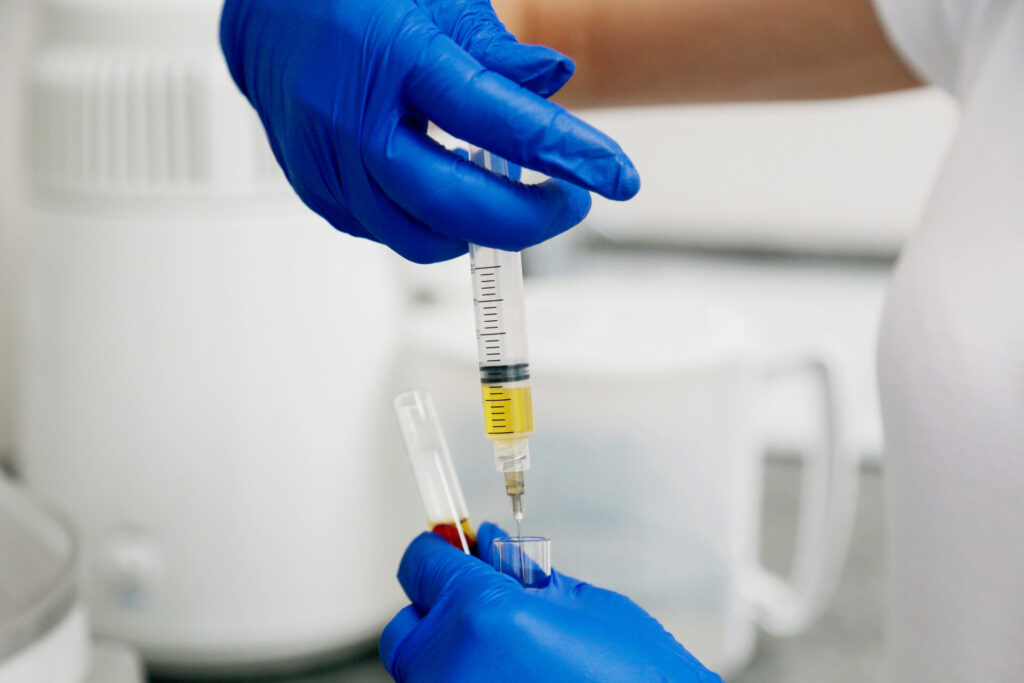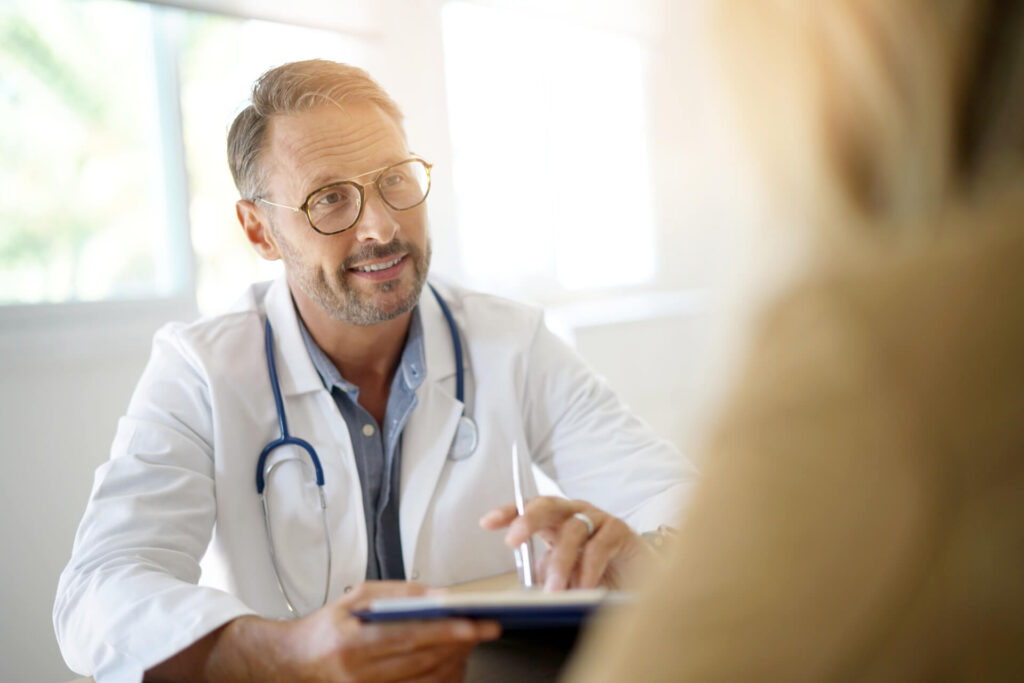Athletes and anyone who particularly engages in high-intensity activities that involve repetitive pivoting are at risk for meniscal injuries. Since the meniscus is the soft rubbery cartilage that cushions and absorbs shock on the knee, meniscus tears can cause debilitating knee pain and joint instability. Most of the time, this would require immediate repair, and one non-surgical option that can help is platelet-rich plasma therapy or PRP injections.
So how often can you get PRP injections to fix torn meniscus injuries? Patients with meniscal injuries can receive at least three PRP injections every 1 to 2 weeks. However, this can still vary depending on the assessment of the severity of the condition. To get your knees at optimal performance, it’s best to consult with a specialist to determine the best PRP treatment plan for your condition.
How Often Do You Need Platelet-Rich Plasma Injections For Torn Meniscus?
Over the years, PRP therapy has become a popular treatment in the field of orthopedic sports medicine. It’s an excellent alternative to surgery, helping athletes recover quicker from their knee injuries without complications and lessening risks of re-injuries.
For those who are interested in platelet-rich plasma treatment, it’s common to wonder how often they would need the injections for their condition. Currently, there’s no standard guideline on how many injections are required since the PRP treatment plan will highly depend on the patient’s condition.
Normally, it would require 3 PRP injections given 2 to 3 weeks apart within a treatment period of 6 months. However, there are also cases where some individuals can already experience relief from pain after one or two injections.
In the case of treating meniscus tears, one study showed improvement in symptoms after administering 3 sequential injections to patients at one-week intervals. According to the research, 4 out of PRP-treated patients had a decrease in meniscal tears in their follow-up exam after 6 months. Additionally, another 6 out of the 10 patients were able to return to their sports activities after the PRP treatment.
Meanwhile, another clinical study closely followed patients with torn cartilage and meniscal lesions. In the said research, the patients received two intra-articular knee injections of PRP at 2 weeks apart and they showed significant improvements within 3 months.
So based on currently available evidence, administering 2 to 3 PRP injections can provide positive effects for the treatment of meniscus injuries. Additionally, PRP can provide continuous improvement as tissue regeneration and wound healing progresses over time.
How Does PRP Injection Therapy for Meniscus Repair Work?

Platelet-rich plasma therapy involves the injections of a patient’s own platelets to stimulate the body’s natural healing process. It contains a high concentration of growth factors that are necessary for regenerating and healing the injured tissue and ligament in the knees. Some of the important healing factors that are present in PRP are:
- Platelet-derived growth factor (PDGF) – This controls the cell growth and division in the blood vessels. It’s responsible for attracting immune cells to the injured site and stimulates proliferation to speed up the healing of the tendons and ligaments.
- Transforming growth factor beta – This plays a major role in tissue regeneration and promotes healing.
- Insulin-like growth factor (IGF) – They’re important in wound healing as they signal the immune system to start building new tissue in the area of the damaged joints.
- Vascular endothelial growth factor (VEGF) – It helps form new blood vessels to increase circulation in the damaged tissues.
- Fibroblast growth factor (FGF) – It grows new cells and promotes collagen synthesis to repair the meniscus and articular cartilage tear.
For the procedure, an orthopedic surgeon may inject the PRP directly to the site of the meniscus injuries. The treatment is usually done with ultrasound guidance to place the injections in the proper area. Meanwhile, another way to administer PRP is via intraoperative injection during a meniscal surgery.
When injected during a meniscal surgery, PRP is strategically placed in areas where blood supply is limited. In theory, the application of PRP will increase the delivery of blood supply and nutrients to accelerate the healing of the meniscus tears. It will also introduce the fibroblast growth factors to begin the production of new collagen, which is the main building block of tissues and knee cartilage such as meniscus.
What Is The Success Rate Of PRP Injections for Treating Meniscus Tears?
Several clinical studies recommend PRP injections for the improvement of joint pain and reducing the risks of recurrence of meniscus injuries. Current available studies present that supplementing meniscal repair surgery with PRP treatment had a lower failure rate than the surgical procedures without PRP.
According to one report, there’s a high risk for meniscus repair failure without PRP, averaging at about 13% to 50%. Meanwhile, the failure rate for meniscal surgery with PRP is only at $4 to 26%. Some experts also suggest that PRP treatments for torn meniscus and other joint problems can decrease the need for arthroscopic meniscus surgery in the future.
PRP is also a great adjunctive treatment for patients receiving physical therapy. It helps improve joint instability and strengthens other components like ligament, tendons, and articular cartilage for better knee health. Additionally, it has a long-term beneficial effect for improving quality of life and bringing back normal range of motion.
When Can You Notice The Results of PRP Meniscal Injections?

The results of PRP injections aren’t immediately noticeable. Because it uses the patient’s own platelets to heal the injured tissues, it can take several weeks to see improvements in the condition.
For minor tear injuries or chronic pain disorders, patients can appreciate the results of their PRP treatment within 2 weeks post-procedure. On the other hand, individuals with more severe pain or serious cases of joint and ligament injuries may have to wait around for 3 to 4 weeks for total healing of their symptoms.
Although PRP provides amazing healing benefits and significant pain reduction, its effects aren’t permanent, as they’re suggested to last for about 6 months. Follow-up meniscus injections may be done in order to maintain its positive effects.
Are PRP Treatments For Meniscus Repair Safe?
Yes, PRP treatments are generally safe since they make use of the individual’s own blood and platelet concentrate. Moreover, the administration of PRP is minimally invasive so it has fewer adverse effects, reduces risks of surgery, and decreases the period of time for complete recovery.
But as with any medical procedure, there are some side effects that can occur after the injections. Here are the possible side effects that may happen from PRP treatments:
- Pain in the injection site – Since PRP is delivered deep into the tissues, it may cause slight pain in the joints and muscles. There may also be a bit of bruising, swelling, and tenderness after the injections. These side effects are temporary and will resolve on their own within a few days.
- Possible infection – Although rare, there are cases when the PRP treatment can cause an infection. This can happen when the PRP serum is prepared in an insanitary environment or when the medical provider uses non-sterile injection tools.
- Blood clot – A poor injection technique may hit an artery or a vein and cause clotting after the procedure. To avoid this, make sure to use an ultrasound or fluoroscopy to bring the injection to the proper site of injury.
- Allergic reactions to the additives in PRP serum – The preparation of PRP sometimes includes the addition of anti-clotting agents. It’s best to ask about the patient’s medical history and possible allergies to remove the risk of allergic reactions from the injections.
How Are Meniscus Injuries Diagnosed?
Before deciding on the appropriate treatment approach, it’s important to do a thorough assessment of the meniscal injury. Here are some of the possible tests that may be done to get an accurate diagnosis of the injury:
- Physical examination – The doctor will visually examine and touch around the knee to look for any tenderness in the meniscus area. During this test, the patient may also be asked to move the knee in different positions to assess the severity of the meniscus tear symptoms.
- McMurray test – This examination helps identify internal tears in the knee joint. This involves bending the knee and leg and when the movement causes a clicking or popping sound within the joint, it indicates the presence of a meniscus tear.
- X-ray scanning – To help rule out other injuries with the similar symptoms, an X-ray scan may also be done to get a visual image of the knee bone. This test can be used to detect possible knee osteoarthritis.
- Magnetic resonance imaging (MRI) – An MRI exam uses large magnets to produce detailed pictures of the cartilage and soft tissues in the knees. It’s the best imaging exam to identify a possible torn ligament.
How to Know Whether Surgery or PRP Injection Should Be Done for Meniscus Treatment

After an MRI examination, a torn meniscus can be classified into three severity grades. These grades will be used to recommend the best course of treatment for the injury. The common classification for meniscal tears are:
- Grade 1 and Grade 2 – There’s a possible a tear in a small focal or linear area but it doesn’t show any extension to the articular surface. Most of the time, grades 1 and 2 aren’t serious injuries and may not even show in a knee arthroscopic examination.
- Grade 3 – The MRI result shows abnormal hyperintensity that extends to the articular surface. This usually indicates a present meniscus tear which will require invasive surgery.
In addition to the results of the MRI test, a doctor will also look at the blood circulation in the meniscus area. If the outer 1/3 of the meniscus has rich blood supply, the injury may be able to heal on its own and won’t require surgical intervention. In these cases, PRP therapy may help to provide relief from its symptoms.
However, if the zone of the meniscal tear lacks blood supply and nutrients, the area will have to be repaired with a surgical operation. Some of the common surgical treatments for meniscus tears are:
- Arthroscopic knee surgery – An arthroscopic procedure allows the orthopedic surgeon to see the knee joint through small incisions. They will then use small surgical instruments and tools to trim and address the issue in the joints.
- Meniscus repair surgery – During a meniscus tear surgery, the doctor will sew the torn knee cartilage pieces which will fix the blood supply and allow the meniscus to heal on its own.
- Meniscectomy – A meniscectomy is a surgical procedure that removes the damaged pieces of meniscus tissue. It can be done partially where small bits of the meniscus are removed or a total meniscectomy where the entire meniscus is taken from the knee.
- Knee replacement – If the knee pain doesn’t get better after you’ve had prior arthroscopic surgery or meniscus repair, a doctor may suggest a total knee replacement to cut the damaged cartilages and replace it with artificial joints.
Patients may still feel a bit of pain after having surgery. Taking anti-inflammatory medications can relieve discomfort from the procedure. Undergoing rehabilitation exercise and physical therapy are also recommended to help improve the function and range of movement of the knees.
Shop Medical Supplies and Tools At FACE Med Store
It’s possible to live with a meniscus tear but in severe cases where it can’t get better on its own, getting a PRP treatment can provide pain relief and healing for the damaged cartilage. Most meniscus tears may require at least 2 to 3 PRP injections every 1 to 2 weeks to get positive outcomes.
At FACE Med Store, we provide high-quality medical equipment and supplies so you can perform the necessary procedures for non-surgical meniscus repairs. We also have tools and products like PEP Factor for skin treatments and hair rejuvenation. You can check our stocks by browsing our website or contact us today to learn more about what we can offer for your practice.






